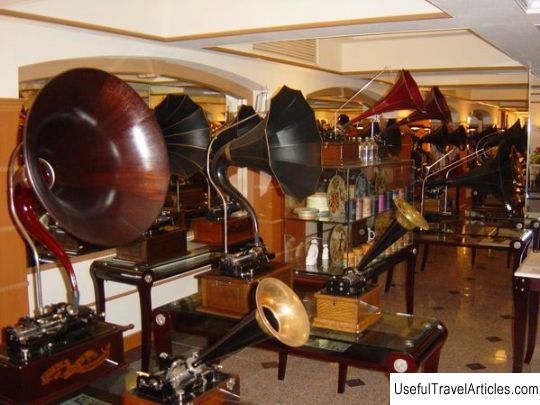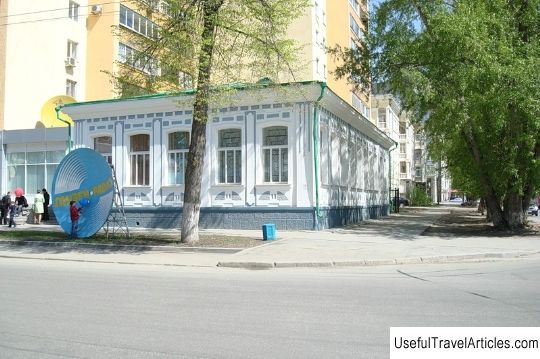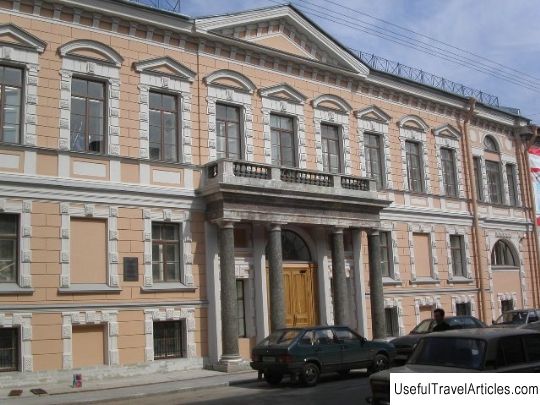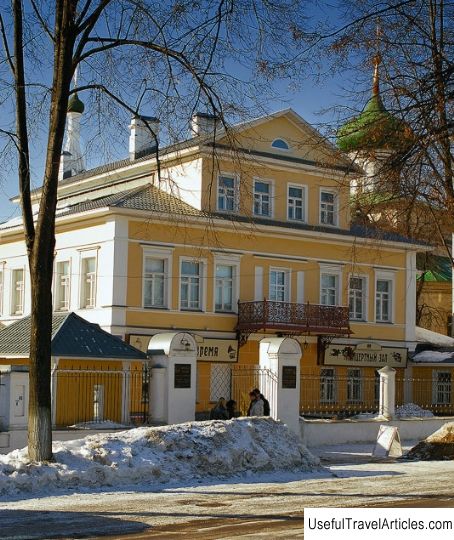Private Museum of Gramophones and Phonographs description and photos - Russia - St. Petersburg: St. Petersburg
Rating: 7,9/10 (1904 votes) 
Private museum of gramophones and phonographs description and photos - Russia - St. Petersburg: St. Petersburg. Detailed information about the attraction. Description, photos and a map showing the nearest significant objects. Photo and descriptionThe private museum, located in St. Petersburg at 32 Kamennoostrovsky Prospect, acquaints museum guests with a huge collection of phonographs and gramophones. The museum collection allows you to see the history of an invention, without which it is difficult to imagine the life of a modern person today - an invention that allows you to record and reproduce sound. The phonograph was independently created by the American inventor Thomas Edison and the French poet and inventor Charles Cros (who he called the “gramophone”) back in 1877. The sound was then recorded on a brass cylinder wrapped in tin foil. Ten years later, in 1887, having carefully studied the invention of Charles Cros, the engineer-inventor, German Emil Berliner, proposed to record and reproduce the sound is not on cylinders, but on disks. Thanks to a different recording principle, the gramophone, in contrast to the phonograph, made it possible to reduce distortions by tens of times during sound recording and reproduction. In addition, the sound played by the gramophone was already 16 times louder in the first models, which, along with the ease of replicating gramophone records, ensured the superiority and victory of the gramophone over the phonograph. The first disc in history was zinc, then ebonite was used for some time, and later - natural shellac resin. The founder of the museum and the owner of the collection is an Honored Artist of Russia, a former circus artist who worked in training and clowning, was a student Yu.V. Nikulina - Deryabkin Vladimir Ignatievich. It all started with a gramophone, which Vladimir Deryabkin bought more than thirty years ago for his clown act, in which the bears took part. Subsequently, during his touring activities, Vladimir Ignatievich was looking for exhibits for his collection, which turned into the first private Russian museum of gramophones and phonographs. His endeavors culminated in a splendid collection of over three hundred examples of excellent craftsmanship and design from renowned workshops of the past. And these are not just devices for producing sound - great masters stand behind each exhibit, each is decorated in the style of his time with complex wood carvings, chasing, painting, and reliefs. Each exhibit in the museum, thanks to the care of the collector, works as it did many decades ago. Each device has its own story. The owner of the museum personally talks about how this or that "pearl" of the collection was born and how it came into his hands. In the Deryabkin Museum there are quite a few original copies, for example, one of the most popular exhibits among visitors - "Grammovar" - a comic symbiosis of a samovar and a gramophone. But the most unexpected surprise of the museum is Vladimir Deryabkin himself - multifaceted, wayward, eccentric - Vladimir Ignatievich writes songs and stories, Evgeny Plushenko skated to his song "Rossiyushka", Joseph Kobzon performs his "Conjuration". Vladimir's collection Ignatievich, however, does not consist only of gramophones and phonographs. These are records, and old photographs, and musical instruments, and unusual household items that surprise with the elegance of their performance. Deryabkin, driven by the passion of a collector, continuously replenishes and expands the collection, the sphere of his interests is growing more and more. only for the benefit of the museum, in which new amazing exhibits appear all the time. This is how antique furniture, music boxes, household items and interior items appear in the collection. Former visitors, having found some kind of antiquity, bring it to the Deryabkin Museum, helping to increase the collection. The owner and collector promises to soon open the samovar collection for display. The museum hosts thematic musical and literary meetings, where the exhibits come to life and you can listen to music recorded in the century before last. p>      We also recommend reading Charax Palace and Park description and photo - Crimea: Gaspra Topic: Private Museum of Gramophones and Phonographs description and photos - Russia - St. Petersburg: St. Petersburg. |




